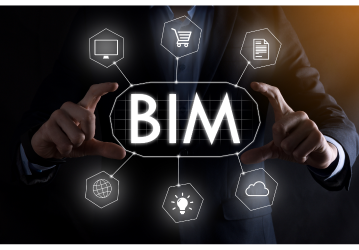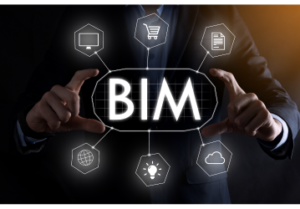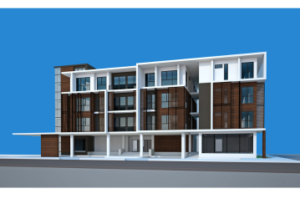In the ever-evolving landscape of construction, Building Information Modeling (BIM) has emerged as a transformative technology, reshaping the way buildings and infrastructure are designed, constructed, and managed. From enhancing collaboration among stakeholders to optimizing project efficiency and sustainability, BIM services offer a myriad of benefits that are revolutionizing the industry.
What is BIM?
At its core, BIM is a digital representation of the physical and functional characteristics of a facility. Unlike traditional 2D drawings, BIM enables architects, engineers, and construction professionals to create and manage intelligent 3D models that contain valuable information about every aspect of a building, from its structural elements to mechanical systems and beyond.

The Role of BIM Services
- Design Optimization: BIM services empower architects and engineers to explore various design alternatives in a virtual environment, allowing them to identify potential clashes and inefficiencies early in the design process. By streamlining workflows and improving coordination, BIM helps optimize building designs for performance, cost, and sustainability.
- Collaborative Workflows: One of the key advantages of BIM is its ability to facilitate collaboration among project stakeholders. Through shared access to a centralized BIM model, architects, engineers, contractors, and owners can collaborate more effectively, minimizing errors and delays while improving communication and decision-making throughout the project lifecycle.
- Construction Planning and Sequencing: BIM services enable construction teams to visualize the entire construction process in advance, identifying potential conflicts and logistical challenges before they arise on-site. By simulating construction sequences and logistics, BIM helps optimize construction schedules, reduce waste, and enhance safety on the job site.
- Facility Management and Operations: Beyond the construction phase, BIM models serve as valuable assets for facility management and operations. By integrating building information with maintenance schedules, equipment specifications, and other relevant data, BIM helps owners and operators maximize the efficiency and performance of their facilities over time.
Key Technologies and Tools
- 3D Modeling Software: Industry-leading software platforms such as Autodesk Revit, Bentley MicroStation, and Trimble Tekla Structures provide robust tools for creating and managing BIM models throughout the project lifecycle.
- Cloud Collaboration Platforms: Cloud-based BIM collaboration platforms such as BIM 360 and Procore enable real-time collaboration and data sharing among project stakeholders, regardless of their geographical location.
- Reality Capture Technologies: Laser scanning, photogrammetry, and drone technology allow for the rapid capture of existing conditions, enabling more accurate and detailed BIM models from the outset.
- Virtual Reality (VR) and Augmented Reality (AR): VR and AR technologies are increasingly being used to visualize BIM models in immersive environments, providing stakeholders with a deeper understanding of design intent and construction sequences.
Future Trends and Challenges
As BIM continues to evolve, several key trends are shaping the future of BIM services, including:
- Integration with Emerging Technologies: The integration of BIM with emerging technologies such as artificial intelligence, machine learning, and IoT is opening up new possibilities for automation, optimization, and predictive analytics in construction and facility management.
- Greater Emphasis on Sustainability: BIM is playing an increasingly important role in sustainable design and construction, enabling architects and engineers to optimize building performance and minimize environmental impact from the outset.
- Standardization and Interoperability: Efforts to standardize BIM data formats and improve interoperability between different software platforms are critical to overcoming barriers to collaboration and realizing the full potential of BIM across the industry.
Despite its many benefits, BIM adoption still faces several challenges, including the need for greater industry-wide collaboration, addressing the skills gap, and managing data security and privacy concerns.
Conclusion
In conclusion, BIM services are revolutionizing the construction industry by enabling more efficient, collaborative, and sustainable approaches to building design, construction, and management. By harnessing the power of digital technology and data-driven insights, BIM is paving the way for a more connected and resilient built environment for generations to come.











